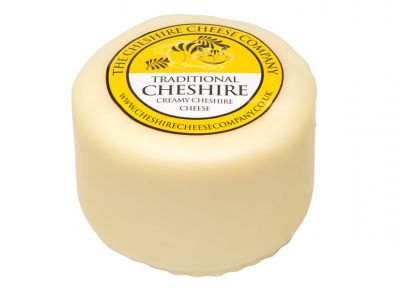Post by iang on May 6, 2020 12:04:16 GMT
It is difficult today to imagine Aldridge Brownhills (note – no hyphen) being a knife edge marginal. But so it was on its creation in 1974. Dame Patricia Hornsby-Smith, having lost out on selection following boundary changes in south east London to Ted Heath in Sidcup migrated to the Midlands but failed to win the new seat by just 366 votes. Labour MP Geoff Edge survived the October election too with a 2,500 majority, but then was swept away by Richard Shepherd in 1979. The new MP gained a majority of over 5000, with almost exactly 50% of the vote. The only years in which this was to fall below 50% in subsequent elections were the Labour landslide of 1997 and 2005, and 1997 was the only occasion the seat looked truly marginal and the only time Sir Richard’s majority fell below 10%. Sir Richard was a good fit for the constituency – Euro-sceptic, but independent minded, and generally well regarded across the political spectrum. His retirement, and replacement by the not local Wendy Morton in 2015 caused some ructions amongst the local Conservatives, and saw the Tory vote dip a bit from 59% to 52%. Subsequent elections however have seen Wendy Morton’s vote rise to heights unheard of in Sir Richard’s times – 65% in 2017 and 70% in 2019. With a majority of 50%, this now looks like the Conservative equivalent of the sort of majority Labour used to get in mining towns, and the days when Labour could hope to represent a constituency like this look well and truly over.
Why is this? It is a seat dominated by Conservative representation at local level, of which more below. Much of the seat looks very middle class – Aldridge is a pleasant suburb, Pelsall which borders Staffordshire has lots of green space, and Streetly, adjoining Sutton Coldfield is very affluent indeed. But in fact, in some ways, it is less middle class than that would suggest – it is well below neighbouring Sutton on figures for qualifications and for managerial and professional occupations for example. One key figure is that of the 2016 EU Referendum – it was 68% Leave, almost identical to the Leave vote across Walsall authority as a whole. This is a very Brexity seat in a very Brexity area. It is also, especially by West Midlands standards, an overwhelmingly white area. On the basis of the 2011 census, the only ward within Aldridge Brownhills that was below 90% white was Streetly, probably the most middle class, and even here, the figure was 88%. The Aldridge wards themselves are over 95% white, as is the rather peripheral and more working-class ward of Brownhills. The constituency as a whole is 93% white, well above national let alone regional average.
In terms of other indicators, the constituency is 76% owner occupied, well above the West Midlands average (65%). However, perhaps surprisingly for what appears to be such a middle-class constituency, the educational attainment is relatively low. It has as many as 30% with no qualifications (above the regional as well as national average and as high as 77th in the list of Parliamentary constituencies), and approaching 21% with Level 4 (degree level) qualifications, as low as 433 in comparison to other seats. 26% of its residents are of managerial or professional status by employment (in neighbouring Sutton, this is 38%, and 35% with degrees or equivalent). The most significant area of employment is in the administrative and secretarial category, with 13%, making it the 66th highest constituency in this area of employment. This is a long way from Sheffield Hallam or Richmond Park, which may help explain its ability to resist the blandishments of the liberal left.
Aldridge Brownhills is made up of six wards. Aldridge itself is covered by two – North, including Walsall Wood, and South and Central. Streetly is right on the edge of the seat and authority, and is almost a suburb of Sutton Coldfield. Rushall-Shelfield is closer to central Walsall, and Pelsall and Brownhills are to the northern end of the constituency, with Brownhills especially somewhat detached from the rest of Aldridge, let alone Walsall as a whole – it is about the same distance to Lichfield from Brownhills as to central Walsall. In most years, every councillor in the constituency is Conservative. When Walsall had all ups in 2004, every ward elected a slate of Conservative councillors except for Brownhills, which returned two Conservatives and one Labour. Brownhills remains one of Labour’s better wards – as mentioned above, it is somewhat distanced from the rest of the constituency, indeed authority, sticking north in something of a salient into Staffordshire. It is also an ex-mining town, the last pits having closed in the 1950s. Rushall-Shelfield can also be gained by Labour in a good year, with Labour having taken it in 2012, 2014 and 2016. Streetly has Liberal Democrat activity, and in the most recent elections, this was the one ward where the Lib Dems were second. But the only time in recent years where Conservative dominance was really challenged was in 2014, where UKIP polled over 30% in every ward bar Aldridge Central and South, and even there it was 27%. Brownhills indeed went UKIP, and it was UKIP intervention in Rushall-Shelfield that handed that ward to Labour for only the second time, with just 109 votes separating the Labour victor from UKIP in third, with the Conservatives in between. Given such results, it is perhaps surprising that Labour retained second place at the General Election a year later, and UKIP may well have felt disappointed with just under 20% of the vote. Since then of course, the UKIP challenge has faded, and the Brownhills Kipper was safely re-elected in the same ward in 2018 – under his new, Conservative, colours. 2012, 2014 and 2016 remain the only years in which the Conservatives have been reduced to four wards of the six in the constituency since the rewarding and all ups of 2004. Perhaps a more typical year was 2008, where the Conservatives polled over 60% in every ward, and the lowest majority was the 40% secured in Brownhills.
Of course, Brexit will fade in salience as a political issue, and who knows what the ramifications of the current situation will be. But having had comparatively poor results in 2016, it will be the non-Conservative councillor up in every marginal ward in Walsall, if and when local elections do take place. The only seats the Conservatives will be defending will be in wards where they hold a full slate. All governments endure mid term blues, and Boris Johnson’s will surely be no exception. Brownhills and Rushall-Shelfield will be vulnerable then, and perhaps the Lib Dems can expand on their mini bridgehead in Streetly. But it seems likely that the days of Aldridge Brownhills being considered a marginal seat are gone for good.
Why is this? It is a seat dominated by Conservative representation at local level, of which more below. Much of the seat looks very middle class – Aldridge is a pleasant suburb, Pelsall which borders Staffordshire has lots of green space, and Streetly, adjoining Sutton Coldfield is very affluent indeed. But in fact, in some ways, it is less middle class than that would suggest – it is well below neighbouring Sutton on figures for qualifications and for managerial and professional occupations for example. One key figure is that of the 2016 EU Referendum – it was 68% Leave, almost identical to the Leave vote across Walsall authority as a whole. This is a very Brexity seat in a very Brexity area. It is also, especially by West Midlands standards, an overwhelmingly white area. On the basis of the 2011 census, the only ward within Aldridge Brownhills that was below 90% white was Streetly, probably the most middle class, and even here, the figure was 88%. The Aldridge wards themselves are over 95% white, as is the rather peripheral and more working-class ward of Brownhills. The constituency as a whole is 93% white, well above national let alone regional average.
In terms of other indicators, the constituency is 76% owner occupied, well above the West Midlands average (65%). However, perhaps surprisingly for what appears to be such a middle-class constituency, the educational attainment is relatively low. It has as many as 30% with no qualifications (above the regional as well as national average and as high as 77th in the list of Parliamentary constituencies), and approaching 21% with Level 4 (degree level) qualifications, as low as 433 in comparison to other seats. 26% of its residents are of managerial or professional status by employment (in neighbouring Sutton, this is 38%, and 35% with degrees or equivalent). The most significant area of employment is in the administrative and secretarial category, with 13%, making it the 66th highest constituency in this area of employment. This is a long way from Sheffield Hallam or Richmond Park, which may help explain its ability to resist the blandishments of the liberal left.
Aldridge Brownhills is made up of six wards. Aldridge itself is covered by two – North, including Walsall Wood, and South and Central. Streetly is right on the edge of the seat and authority, and is almost a suburb of Sutton Coldfield. Rushall-Shelfield is closer to central Walsall, and Pelsall and Brownhills are to the northern end of the constituency, with Brownhills especially somewhat detached from the rest of Aldridge, let alone Walsall as a whole – it is about the same distance to Lichfield from Brownhills as to central Walsall. In most years, every councillor in the constituency is Conservative. When Walsall had all ups in 2004, every ward elected a slate of Conservative councillors except for Brownhills, which returned two Conservatives and one Labour. Brownhills remains one of Labour’s better wards – as mentioned above, it is somewhat distanced from the rest of the constituency, indeed authority, sticking north in something of a salient into Staffordshire. It is also an ex-mining town, the last pits having closed in the 1950s. Rushall-Shelfield can also be gained by Labour in a good year, with Labour having taken it in 2012, 2014 and 2016. Streetly has Liberal Democrat activity, and in the most recent elections, this was the one ward where the Lib Dems were second. But the only time in recent years where Conservative dominance was really challenged was in 2014, where UKIP polled over 30% in every ward bar Aldridge Central and South, and even there it was 27%. Brownhills indeed went UKIP, and it was UKIP intervention in Rushall-Shelfield that handed that ward to Labour for only the second time, with just 109 votes separating the Labour victor from UKIP in third, with the Conservatives in between. Given such results, it is perhaps surprising that Labour retained second place at the General Election a year later, and UKIP may well have felt disappointed with just under 20% of the vote. Since then of course, the UKIP challenge has faded, and the Brownhills Kipper was safely re-elected in the same ward in 2018 – under his new, Conservative, colours. 2012, 2014 and 2016 remain the only years in which the Conservatives have been reduced to four wards of the six in the constituency since the rewarding and all ups of 2004. Perhaps a more typical year was 2008, where the Conservatives polled over 60% in every ward, and the lowest majority was the 40% secured in Brownhills.
Of course, Brexit will fade in salience as a political issue, and who knows what the ramifications of the current situation will be. But having had comparatively poor results in 2016, it will be the non-Conservative councillor up in every marginal ward in Walsall, if and when local elections do take place. The only seats the Conservatives will be defending will be in wards where they hold a full slate. All governments endure mid term blues, and Boris Johnson’s will surely be no exception. Brownhills and Rushall-Shelfield will be vulnerable then, and perhaps the Lib Dems can expand on their mini bridgehead in Streetly. But it seems likely that the days of Aldridge Brownhills being considered a marginal seat are gone for good.




